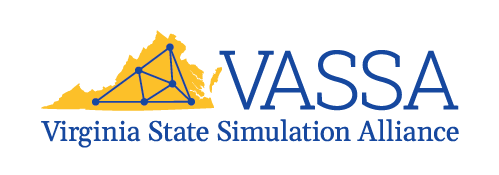I am the inaugural Director of Research and Publications in VASSA and, according to my official, VASSA job description, I am “responsible for initiating and providing services that enable members to develop, implement, and continue research concerning simulation.” While trying to do that it occurs to me that some VASSA members don’t yet know enough about research to “develop, implement, and continue,” so I have decided to initiate this blog series to describe what research is in hopes of enabling everyone to know enough about it to begin to want to become involved in it. My reasoning is simple (like me): If I can help you know enough about research to like it, then you can help yourself to develop, implement, and continue it. I, then, can sit back and goof off between answering occasional questions.
First off (can I write that in the 2nd paragraph?) I confess that much of what I will write in these blogs is based on what I wrote in “Evaluating research: Methodology for people who need to read research,” which was published last year by Sage. I tell you this so you know my sources, and so that you know where to go if you want more information.
So, let’s begin (in the 3rd paragraph?) with a definition of research and some distinctions between scientific research and other ways of knowing things. The essence of research is that it is “a critical process for asking and attempting to answer questions,” in our case questions about simulation. There are two key words in this definition: critical and attempting. I use critical in the traditional sense of the word, an assessment of positive and negative qualities of a thing. I use attempt also in its traditional sense; research involves trying to get an answer, but it does not involve getting the answer. Scientific research one of the four practices that Peirce (1877) described as ways of knowing or understanding things. Scientific research involves obtaining information through systematic, verifiable observations.
The other three practices for knowing and understanding that Pierce described are a priori, authority, and tradition. A priori refers to pure logic. When someone says “C’mon, it’s logical” they are using the a priori method to convince you that something is correct. Authority involves accepting knowledge because it comes from a creditable source. We accept information because we trust the person who, literally or figuratively, says “Because I said so.” Tradition relies on historical precedent; we accept something as correct because it’s always been that way. In the Game of Thrones series, the Dothraki ended a discussion with the (translated into English) phase “It is known.” “We’ve always done it that way” is another version of tradition.
What makes scientific research different from the other three ways of knowing is that research is always critical and is self-correcting (Sagan, 1980). Philosophy of Science is a wonderful discipline, but one could get lost in it for years and we don’t have years, so I’ll condense. The essence of why research is critical and self-correcting is that we always believe the data. (It does happen that sometimes people fabricate data, but that is quite rare.) Always “believing” the data means that observations are more important than the theories we develop to explain those observations. When we have contradictory data, for example, we don’t declare that some of the data are wrong and keep our theory. When faced with contradictory data, we figure out a new explanation that incorporates all of the data; we change the theory to fit the data. I don’t mean that we change our hypothesis to fit the data we collect—that’s HARKing (Kerr, 1998). I mean that when we have contradictory studies we have to figure what is missing from our current understanding; we come up with a way that both studies might be correct and then we test that new explanation with a third study.
So, step number one in becoming interested in research involves being willing to set aside the desire to prove that something is true. We have to be willing to accept the notion that our current understanding is not as good as it could be. We have to be willing to be critical (remember: positive and negative) and willing to be self-correcting. Essentially, we have to be willing to accept and act upon the belief that we don’t know all there is to know and that some of what we will learn in the future will require that we change our minds about what we think he know. Think on that for a while, and, if you are still interested, come back for the next blog in the series.
Cheers,
Frank Dane
References
Kerr, N. L. (1998). HARKing: Hypothesizing after the results are known. Personality and Social Psychology Review, 2(3), 196-217.
Peirce, C. S. (1877). The Fixation of Belief. Popular Science Monthly, 12(November), 1-15.
Sagan, C. (1980). Cosmos. New York: Random House.
